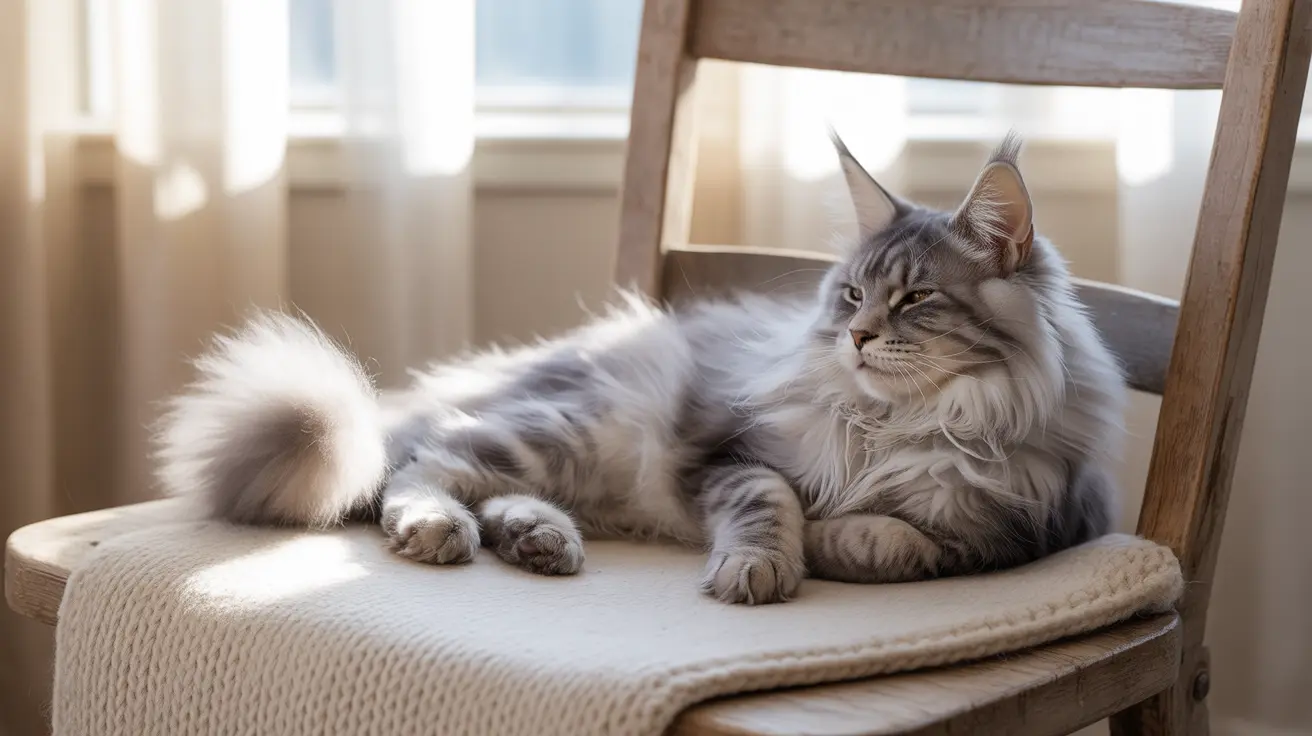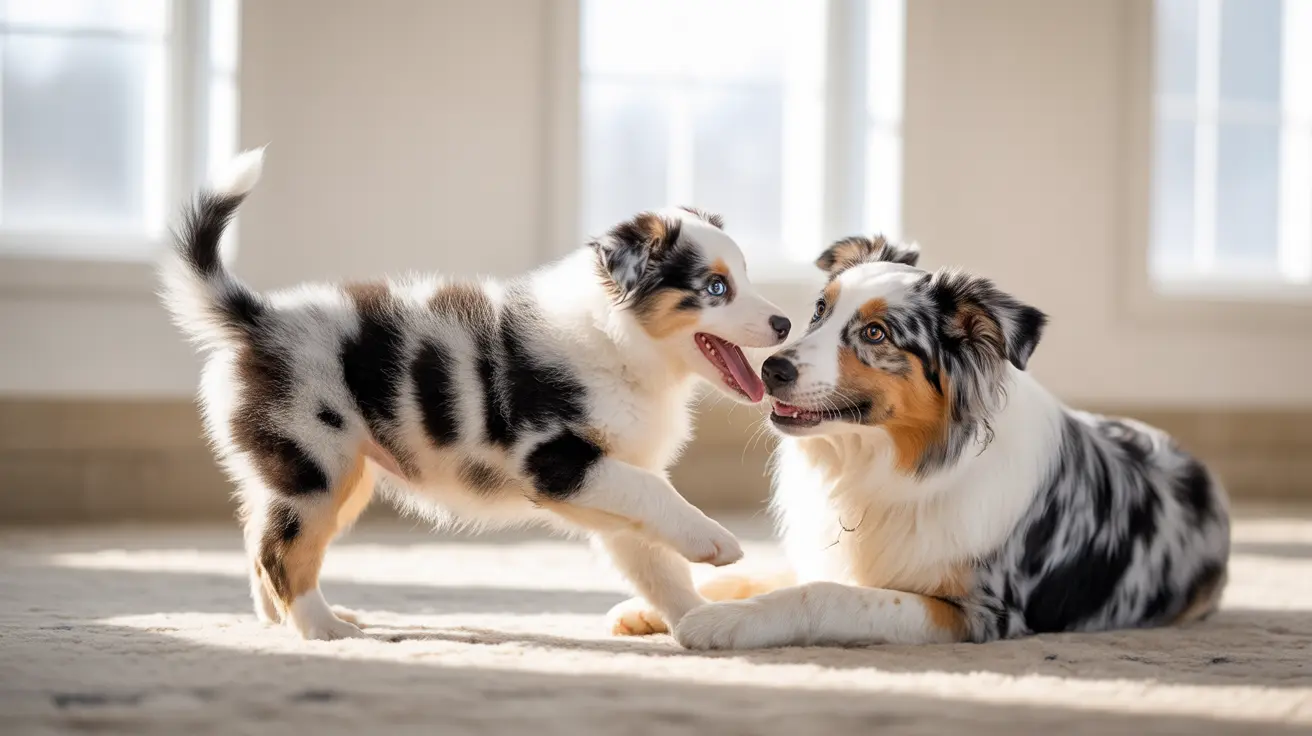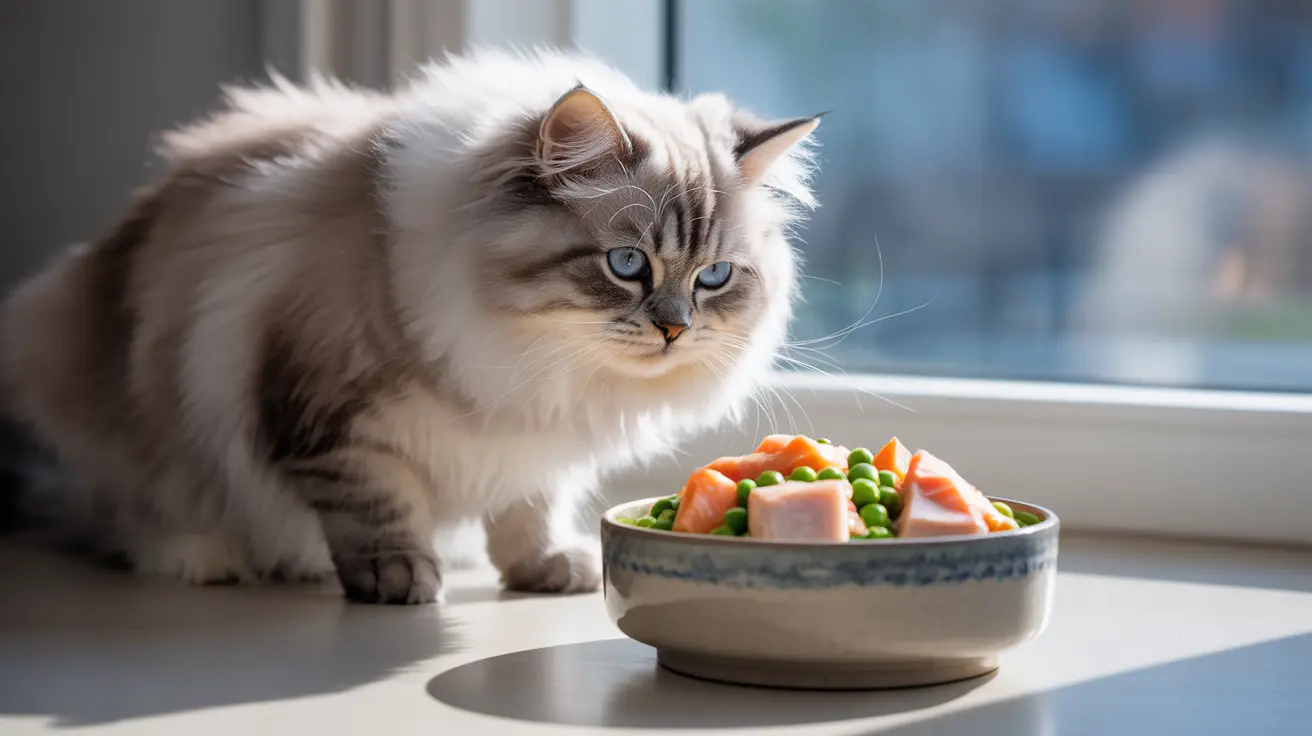Signs a Cat Is Dying Soon: Recognizing End-of-Life Symptoms and Providing Compassionate Care
Watching a beloved feline companion approach the end of their life is one of the most emotionally challenging experiences any cat owner can face. Understanding the signs a cat is dying soon enables pet parents to provide the compassionate care their furry family member deserves during their final days. While each cat's journey is unique, recognizing common behavioral and physical changes can help you make informed decisions about your pet's comfort and quality of life.
The dying process in cats varies significantly based on their individual health history, underlying conditions, and overall constitution. Some cats may show subtle changes over weeks or months, while others may decline more rapidly. By learning to identify these critical signs and working closely with your veterinarian, you can ensure your cat receives appropriate palliative care and experiences a peaceful transition with dignity and love.
Understanding Behavioral Changes in Dying Cats
Cats are masters at hiding discomfort and illness, making behavioral changes often the first indicators that something serious is occurring. When a cat is nearing the end of life, their personality and daily routines typically undergo noticeable shifts that attentive owners can recognize.
One of the most common behavioral signs a cat is dying soon involves changes in social interaction. Some cats become increasingly clingy and seek constant comfort from their owners, while others withdraw completely and prefer isolation. You may notice your cat hiding in unusual places – under beds, in closets, or other secluded areas they previously avoided. This instinctual behavior stems from their natural desire to find a safe, quiet space during vulnerability.
Vocalization patterns often change dramatically during the end-of-life period. Previously quiet cats may become increasingly vocal, crying or meowing more frequently, especially at night. Conversely, normally talkative cats might become unusually silent. These vocal changes often indicate discomfort, confusion, or anxiety about their changing physical condition.
Sleep patterns and activity levels also shift significantly. Dying cats typically exhibit reduced alertness and spend considerably more time sleeping. When awake, they show less interest in activities they once enjoyed, such as playing, exploring, or interacting with family members. Many cats also experience changes in their grooming habits, either grooming excessively due to stress or, more commonly, poor grooming resulting in a disheveled appearance.
Physical Symptoms Indicating Imminent Death
Physical symptoms provide clearer indicators that a cat is approaching the end of life. These changes often develop gradually but can sometimes appear suddenly, depending on the underlying cause of decline.
Loss of appetite represents one of the earliest and most consistent physical signs a cat is dying soon. Cats may initially show reduced interest in food, progressing to complete refusal to eat or drink. This appetite loss leads to noticeable weight loss and muscle wasting, giving the cat a gaunt appearance with prominent bones and sunken eyes.
Respiratory changes become increasingly apparent as a cat's condition deteriorates. You may observe labored breathing, shallow breaths, or irregular breathing patterns. Some cats develop breathing difficulties that cause them to breathe through their mouths or assume unusual positions to ease breathing discomfort.
Body temperature regulation becomes compromised in dying cats. Low body temperature is particularly significant, as cats typically maintain higher body temperatures than humans. You might notice your cat seeking warm places more frequently or feeling cooler to the touch than usual.
Digestive system changes manifest through vomiting, diarrhea, and general gastrointestinal distress. These symptoms often indicate organ failure and the body's inability to process food and waste normally. Additionally, dying cats frequently experience increased urination or incontinence as their bodily functions begin to shut down.
The Five Stages of the Dying Process in Cats
Understanding the dying process helps cat owners recognize where their pet stands in their final journey. Adapted from Elisabeth Kübler-Ross's model, the five phases provide a framework for understanding what to expect during a cat's final days.
Stage One: Decreased Food Intake
The first stage involves a noticeable reduction in appetite and food consumption. Cats may show interest in food but eat smaller portions, or they may become increasingly selective about what they're willing to consume. This stage can last days to weeks, depending on the underlying condition causing the decline.
Stage Two: Metabolic Slowdown
During the second stage, the cat's metabolism begins slowing significantly. You'll notice increased lethargy, more sleeping, and reduced responsiveness to stimuli. The cat may appear disoriented or confused, and their body temperature may begin dropping as their system works less efficiently.
Stage Three: Temporary Improvement
Some cats experience a brief period where they seem to rally, showing renewed interest in food, increased alertness, or more social behavior. This temporary improvement can be emotionally challenging for owners who may hope their cat is recovering, but it's often a natural part of the dying process.
Stage Four: Pain Insensitivity
As the body's systems continue shutting down, cats may become less responsive to pain and external stimuli. They may appear to be sleeping more deeply or seem disconnected from their surroundings. Breathing patterns often become more irregular during this stage.
Stage Five: The Final Breath
The final stage involves the cessation of vital functions. Breathing becomes increasingly labored and irregular before stopping entirely. The heart continues beating briefly after breathing stops, but ultimately, all bodily functions cease.
Creating a Peaceful Environment for Your Dying Cat
Providing compassionate care during your cat's final days involves creating an environment that prioritizes comfort and reduces stress. Understanding how to support your cat through this process can significantly impact their quality of life during their remaining time.
Establish a quiet, comfortable space where your cat can rest undisturbed. This area should be easily accessible, warm, and away from household noise and activity. Provide soft bedding that's easy to clean in case of accidents, and ensure the space has adequate ventilation while remaining cozy.
Make essential resources easily accessible by placing food and water bowls within easy reach of your cat's resting area. Consider using elevated bowls or shallow dishes that require minimal effort to access. Similarly, position litter boxes nearby and consider using boxes with lower sides for easier entry.
Respect your cat's preferences regarding social interaction. Some cats crave constant companionship during their final days, while others prefer solitude. Follow your cat's cues – if they seek attention, provide gentle petting and quiet companionship. If they withdraw, respect their need for space while remaining available if they change their mind.
Minimize environmental stressors by maintaining consistent routines, reducing loud noises, and limiting visitors or new experiences that might cause anxiety. Keep other pets calm and consider separating them if they're causing stress to the dying cat.
Veterinary Care and Pain Management
Professional veterinary guidance becomes crucial when recognizing signs a cat is dying soon. Veterinarians can assess your cat's condition, provide pain management options, and help you make informed decisions about their care.
Quality of life assessments help determine whether your cat is suffering and what interventions might improve their comfort. Many veterinarians use structured evaluation tools like the HHHHHMM scale, which assesses Hurt, Hunger, Hydration, Hygiene, Happiness, Mobility, and whether there are More good days than bad.
Palliative care options may include pain medications, anti-nausea treatments, appetite stimulants, or other supportive therapies designed to improve comfort rather than cure the underlying condition. Your veterinarian can recommend specific interventions based on your cat's symptoms and overall condition.
Hospice care for cats involves comprehensive comfort-focused treatment that can be provided at home or in specialized facilities. This approach emphasizes pain management, emotional support, and maintaining the highest possible quality of life during the remaining time.
Making the Difficult Decision About Euthanasia
Deciding whether to pursue euthanasia represents one of the most challenging decisions cat owners face. This choice should prioritize your cat's wellbeing over your own emotional needs, focusing on their quality of life and level of suffering.
Consider euthanasia when your cat can no longer eat, drink, move comfortably, or live without significant pain despite medical intervention. Signs that euthanasia may be appropriate include uncontrollable pain, inability to breathe comfortably, loss of bladder and bowel control, and complete loss of interest in surroundings or activities.
The euthanasia procedure itself is designed to be peaceful and painless. Veterinarians typically administer a sedative to help the cat relax, followed by an injection that quickly and gently stops the heart. Many veterinarians offer in-home euthanasia services, allowing cats to pass peacefully in familiar surroundings.
Timing the decision appropriately involves honest assessment of your cat's condition and consultation with your veterinarian. While it's natural to hope for improvement, prolonging suffering for emotional reasons isn't in your cat's best interest. Trust your veterinarian's professional judgment while considering your intimate knowledge of your cat's personality and preferences.
Legal Considerations and After-Death Care Options
Planning for your cat's remains requires understanding local regulations and available options. Different jurisdictions have varying rules about pet burial and cremation, so research your local requirements in advance.
Home burial options may be available if you have appropriate property and local regulations permit it. Check with local authorities about depth requirements, property restrictions, and any permits needed. Some areas prohibit home burial entirely, while others have specific guidelines that must be followed.
Pet cremation services offer alternatives for families who cannot or prefer not to bury their cats at home. Individual cremation allows you to receive your cat's ashes, while communal cremation is typically less expensive but doesn't return ashes to the family. Many veterinary clinics can arrange cremation services or recommend reputable providers.
Pet cemetery burial provides a formal resting place with ongoing maintenance and memorial options. These facilities often offer various service levels, from simple burial to elaborate memorial services with headstones or other markers.
Coping with Anticipatory Grief and Loss
The emotional impact of watching your cat approach death often begins well before they actually pass away. Anticipatory grief is a natural response to impending loss and requires attention and support.
Acknowledge that feeling sad, angry, or confused about your cat's condition is normal and healthy. Allow yourself to experience these emotions without judgment while focusing on providing the best possible care during your cat's remaining time.
Seek support from friends, family members, or professional counselors who understand the human-animal bond. Many communities offer pet loss support groups or hotlines staffed by trained volunteers who can provide guidance and emotional support during this difficult time.
Create meaningful memories during your cat's final days by spending quality time together, taking photos, or creating paw print impressions. These activities can provide comfort both during the dying process and after your cat has passed away.
Frequently Asked Questions
- How can I tell if my cat is in pain during the dying process?
Cats in pain often exhibit hunched postures, reluctance to move, restlessness, poor grooming, changes in breathing patterns, and withdrawal from social interaction. Some cats become more vocal, while others become unusually quiet. Contact your veterinarian immediately if you suspect your cat is experiencing pain, as effective pain management options are available.
- Should I force my dying cat to eat or drink?
No, you should not force a dying cat to eat or drink. Loss of appetite is a natural part of the dying process, and forcing food or water can cause additional stress and discomfort. Instead, offer small amounts of favorite foods and ensure fresh water is easily accessible. Consult with your veterinarian about appetite stimulants or other supportive measures if appropriate.
- How long does the dying process typically take in cats?
The duration of the dying process varies significantly depending on the underlying condition, the cat's overall health, and individual factors. Some cats decline rapidly over days, while others may show signs of approaching death for weeks or even months. Working with your veterinarian can help you understand what to expect based on your cat's specific situation.
- Is it normal for my cat to hide when they're dying?
Yes, hiding is a very common behavior in dying cats. This instinctual behavior stems from their natural desire to find a safe, quiet place during times of vulnerability. Respect your cat's need for solitude while ensuring they have access to food, water, and a comfortable resting area. Check on them regularly without forcing interaction.
- What happens to a cat's body temperature when they're dying?
Dying cats often experience a drop in body temperature as their circulatory system becomes less efficient. You may notice that your cat feels cooler to the touch, particularly in their ears and paws. They may seek warm places more frequently or benefit from additional blankets or heated beds to maintain comfort.
- Can cats sense when they're dying?
While cats can feel pain, weakness, and discomfort associated with their declining condition, they likely don't comprehend mortality in the way humans do. However, they do experience changes in how they feel physically and may alter their behavior accordingly. This is why providing comfort, reducing stress, and managing pain becomes so important during their final days.
- When should I consider euthanasia for my dying cat?
Consider euthanasia when your cat's quality of life has diminished significantly despite medical intervention. Key factors include uncontrollable pain, inability to eat or drink, difficulty breathing, loss of mobility, and complete withdrawal from activities they once enjoyed. Your veterinarian can help assess your cat's condition and guide you through this difficult decision while prioritizing your cat's comfort and dignity.
Conclusion
Recognizing the signs a cat is dying soon enables loving pet parents to provide compassionate, appropriate care during one of life's most difficult transitions. By understanding behavioral changes, physical symptoms, and the stages of the dying process, you can work with your veterinarian to ensure your cat's final days are as comfortable and dignified as possible. Whether through palliative care, hospice support, or the difficult decision of euthanasia, your focus should remain on your cat's wellbeing and quality of life.
Remember that grieving the impending or actual loss of your feline companion is a natural and important process. Seek support when needed, create meaningful memories during your time together, and take comfort in knowing that your love and care make a significant difference in your cat's final journey. The bond you've shared will endure long after your beloved pet has peacefully crossed the rainbow bridge, leaving you with cherished memories of a life well-loved.






